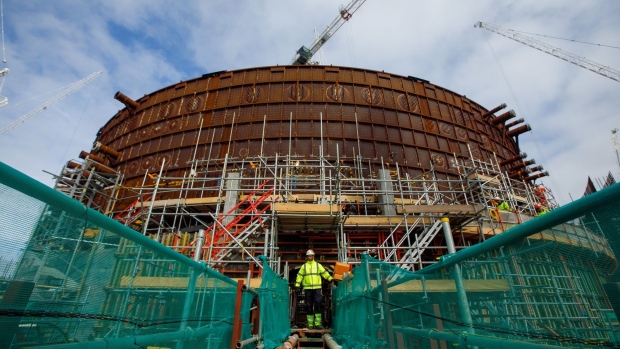
China's climate goals hinge on a US$440B nuclear buildout
BNN Bloomberg
China is planning at least 150 new reactors in the next 15 years, more than the rest of the world has built in the past 35.
Nuclear power once seemed like the world’s best hope for a carbon-neutral future. After decades of cost-overruns, public protests and disasters elsewhere, China has emerged as the world’s last great believer, with plans to generate an eye-popping amount of nuclear energy, quickly and at relatively low cost.
China has over the course of the year revealed the extensive scope of its plans for nuclear, an ambition with new resonance given the global energy crisis and the calls for action coming out of the COP26 Climate Summit in Glasgow. The world’s biggest emitter, China’s planning at least 150 new reactors in the next 15 years, more than the rest of the world has built in the past 35. The effort could cost as much as US$440 billion; as early as the middle of this decade, the country will surpass the U.S. as the world’s largest generator of nuclear power.
The government’s never been shy about its interest in nuclear, along with renewable sources of energy, as part of President Xi Jinping’s goal to make China’s economy carbon-neutral by mid-century. But earlier this year, the government singled out atomic power as the only energy form with specific interim targets in its official five-year plan. Shortly after, the chairman of the state-backed China General Nuclear Power Corp. articulated the longer-term goal: 200 gigawatts by 2035, enough to power more than a dozen cities the size of Beijing.
It would be the kind of wholesale energy transformation that Western democracies — with budget constraints, political will and public opinion to consider — can only dream of. It could also support China’s goal to export its technology to the developing world and beyond, buoyed by an energy crunch that’s highlighted the fragility of other kinds of power sources. Slower winds and low rainfall have led to lower-than-expected supply from Europe’s dams and wind farms, worsening the crisis, and expensive coal and natural gas have led to power curbs at factories in China and India. Yet nuclear power plants have remained stalwart.
“Nuclear is the one energy source that came out of this looking like a champion,” said David Fishman, an energy consultant with The Lantau Group. “It generated the whole time, it was clean, the price didn’t change. If the case for nuclear power wasn't already strong, it’s a lot stronger now.”
